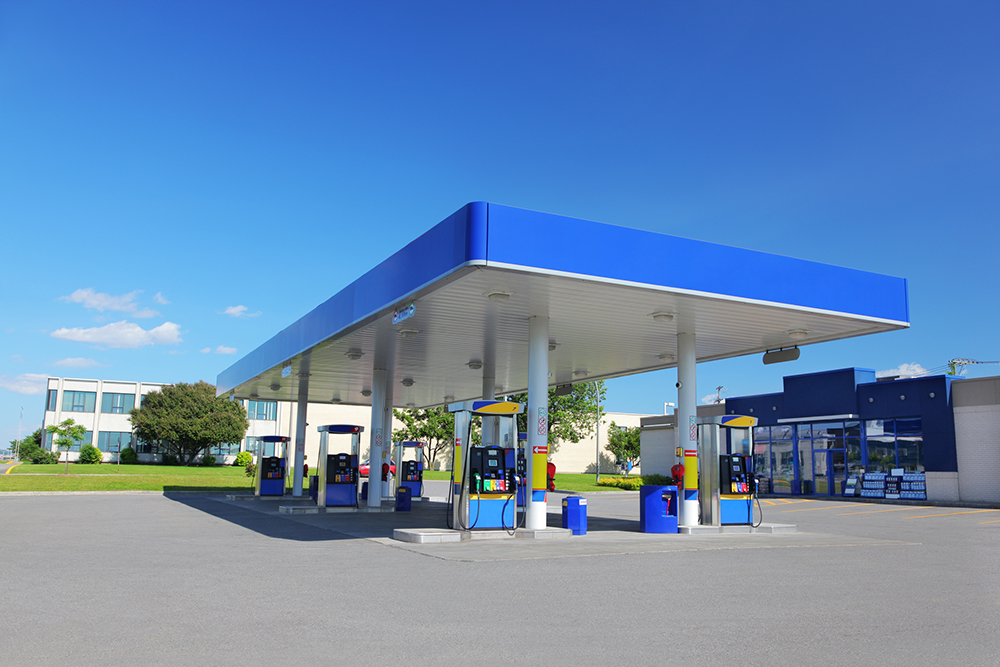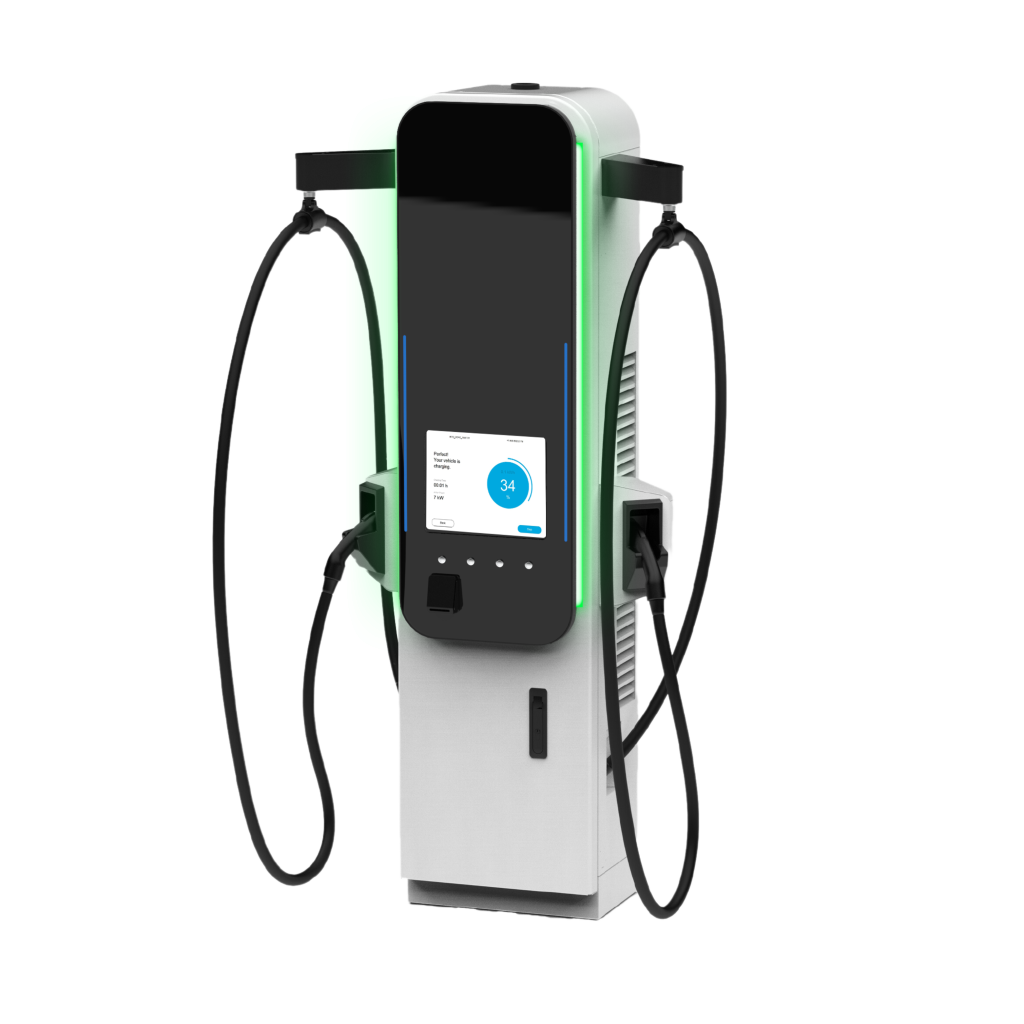Adding Commercial EV Chargers to Your Fueling Stations
Major oil companies and independent operators alike have decided to upgrade existing fueling stations to accommodate electric vehicles (EVs) with fast charging capabilities. Most companies retrofit existing fueling stations as mixed-use facilities that offer both gasoline refueling and commercial EV charging stations. Existing facilities provide the perfect opportunity for a mixed-use retrofit because of their locations in traditionally high-demand areas. Potential customers include both long-distance travelers and local patrons, who can take advantage of existing convenience offerings for restroom breaks, snacks and beverages.
Whether retrofitting an existing station or building a new charging hub, careful planning for these key factors can help your move to an EV charger strategy realize greater success and fewer snags. This migration is a blend of cost, opportunity and necessity. Reports show that major energy companies that operate retail locations must transition or run the risk of closure.
Location, cost, power requirements and conversion time are among the multiple considerations that factor into a gas station’s decision to convert all or a portion of its existing infrastructure to allow for EV charging.


Commercial EV charger infrastructure and power
The foundation of any commercial EV charging installation is an adequate power supply. Many existing stations may need to upgrade their electrical infrastructure to support high-powered DC fast chargers. Most modern chargers require 480V input, which could necessitate transformer upgrades or new switchgear.
Generally, infrastructure renovations will include:
- Breaking ground to run power
- Permits and contractors
- Transformer upgrades
Best practice is to make any infrastructure changes upfront. This enables a fueling station to gradually add EV chargers as part of a long-term migration from fossil fuel pumps to charging stations. Some of the best advice is to look ahead at the next ten years, planning for needs not just today but for the future. This includes selecting modular EV chargers that can be upgraded for higher power needs as EVs evolve.
Space utilization and traffic flow
Space utilization and traffic flow are crucial considerations, especially in urban locations with limited footprints. Careful planning of charger placement can help optimize both space and customer experience. Consider:
- Optimizing traffic flow (queue arrangements) to accommodate multiple vehicles entering and leaving the facility
- Proximity to store entrances and amenities
- Potential/allocated space for future expansion


EV charging equipment and customization
Choosing the correct charging equipment is vital. Look for scalable systems that allow you to start with lower power outputs and upgrade as demand increases.
Commercial businesses can apply for one of many federal, state and utility-sponsored incentives to purchase and install fast chargers. The US Department of Transportation’s Federal Highway Administration operates the NEVI program, administering a fund apportioning resources to all 50 states to strategically deploy EV charging stations.
Many stations are finding ways to integrate EV charging seamlessly with their existing operations. This can include:
- Customized branding on charging equipment
- Integration with existing payment systems and loyalty programs
- Displays in various sizes
- Cable options
EV customer experience and amenities
EV charging typically takes longer than traditional refueling. This presents an opportunity to enhance your retail offerings. Consider how to make the charging time productive or enjoyable for customers. This might involve upgrading your convenience store, adding comfortable waiting areas, or providing Wi-Fi and entertainment options.


Planning for the future of EV evolution
The EV charging landscape is rapidly evolving. When designing your installation, build in flexibility for future changes. This might include running additional conduits for future EV fast chargers or choosing equipment with upgradeable power modules.
Remember to factor in maintenance and ongoing support needs. While commercial EV chargers are generally reliable, having a plan for quick repairs and regular maintenance is crucial to ensuring consistent service for your customers.

Why choose BTC POWER as your EV charger manufacturer
BTC POWER, founded in 1999, is a forerunner among North American EV charger manufacturers. More than 22,000 charging stations have been sold worldwide within a product range from 7.2 kW to 350 kW. Our experience is incorporated into our charging station design to address the most pressing challenges of crafting EV charging infrastructure. As a result, BTC POWER has the highest uptime among commercial EV charger manufacturers at 98%.
Read more about BTC POWER reliability and industry-leading uptime in the white paper, Quality Engineering Drives EV Charging Station Uptime To 98%
Fueling the future with EV Chargers for Business
BTC POWER solutions serve diverse sectors, including charge point operators, oil & gas, convenience stores and various fleet operations. Our US manufacturing capabilities comply with ‘Buy America’ standards, offering reliable, efficient, and future-proof EV charging solutions.
We offer customizable DC fast chargers, such as our Level 3 Split System, with available NEVI-compliant configurations. The split system enables simultaneous charging for two vehicles at a time.
The split system DC fast chargers from BTC POWER supply a future-proof solution for upgrading existing refueling stations or building new charging hubs. With advanced features like liquid-cooled cables and scalable design, it is ready to meet the evolving needs of tomorrow’s EVs.
Key features:
- True commercial EV charger for use as a profit center
- Touchscreen and RFID reader for easy operation
- Simultaneous charging capability that supports high-powered DC fast charging (480V input)
- 80% charge in 10-15 minutes
- Scalable system allowing for future power upgrades
- Seamlessly integrate with existing payment systems and loyalty programs
- Reliable performance with quick maintenance support

Frequently Asked Questions
Fueling stations are well positioned to capitalize on the transition to electric vehicles, with consumers accustomed to relying on these locations to fill up internal combustion engine (ICE) vehicles. The “trip to the gas station” ingrained habit could help smooth the transition for EV owners, making fueling stations a natural choice for electric vehicle charging. As a fueling station owner/operator, adding EV charging stations is a natural extension of existing services and poses a definite profit potential.
The profitability of EV charging stations depends on several factors. According to NREL (National Renewable Energy Laboratory), DC fast chargers achieve profitability upon reaching 6-8 charging sessions per unit. Empirically, convenience store owners operating fueling stations with added EV charging stations have said their busiest locations might witness up to 40 daily charges on a single charger. These projections and anecdotes highlight the upside potential for fueling centers that install commercial EV charging stations.
While it may take time to reach profitability, strategically placed charging stations could become a significant revenue stream, complementing your existing fueling business and potentially increasing foot traffic for in-store sales for food, beverages and sundries due to wait times during a charging session.
The future of EV charging stations is poised for significant growth and transformation due to the continued rise in electric vehicle adoption. According to a report from BloombergNEF, global electric vehicles are slated to reach 45 percent of global passenger-vehicle sales by 2030 and 73 percent by 2040. This rapid growth in EV adoption will drive an increased demand for convenient and reliable EV charging infrastructure, particularly at fueling stations, as EV drivers seek to charge their vehicles while on the go.
To meet this growing demand, fueling station owners must invest in next-generation charging technology, such as DC fast chargers, and integrate renewable energy sources and smart grid capabilities. This type of forward thinking will provide the most sustainable and efficient charging experience for EV drivers. Adapting to this changing landscape and acting swiftly for early adoption can help fueling stations retain a competitive edge by meeting the needs of the rapidly expanding EV market.
The lifespan of an EV charging station is generally longer than that of a traditional gasoline fuel pump.
This extended lifespan is due to EV charging stations having fewer moving parts and mechanical components, parts that tend to wear down quickly. As EV charging technology continues to evolve, fueling station owners may need to update their equipment more frequently to keep pace with advancements and maintain a competitive edge in the rapidly growing EV charging market.
In addition, modular EV charging stations can increase charging power by quickly switching out modules.
